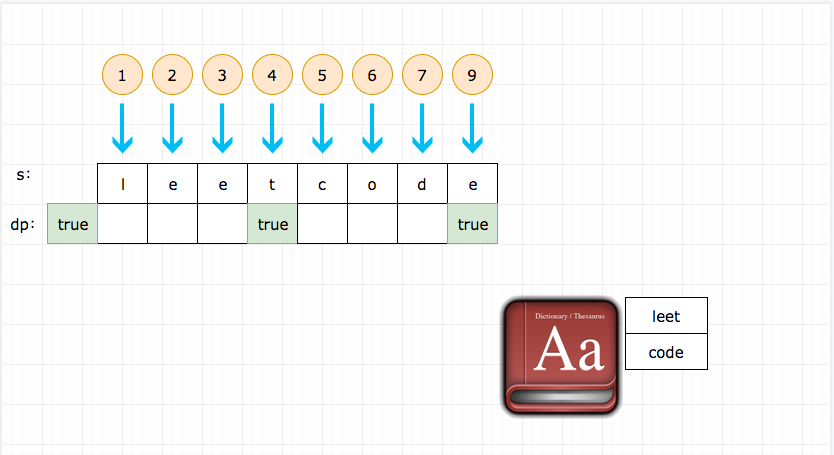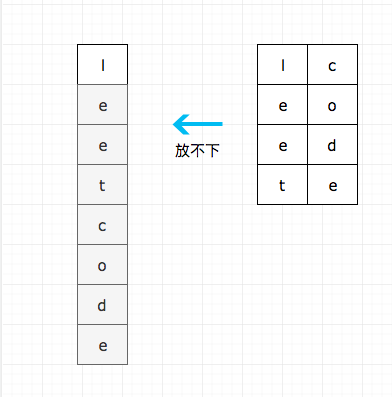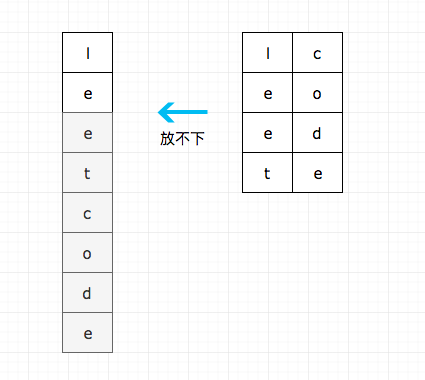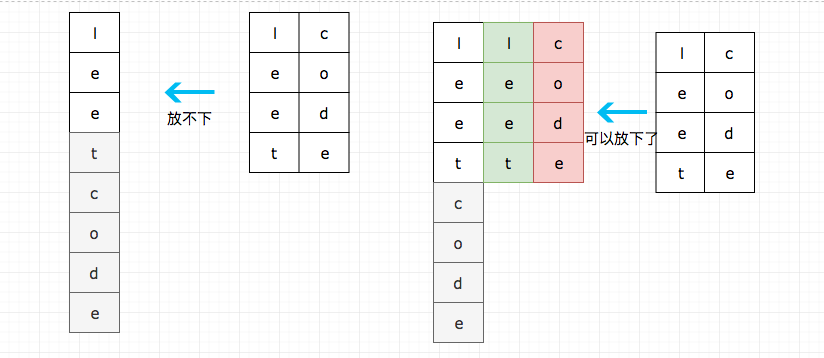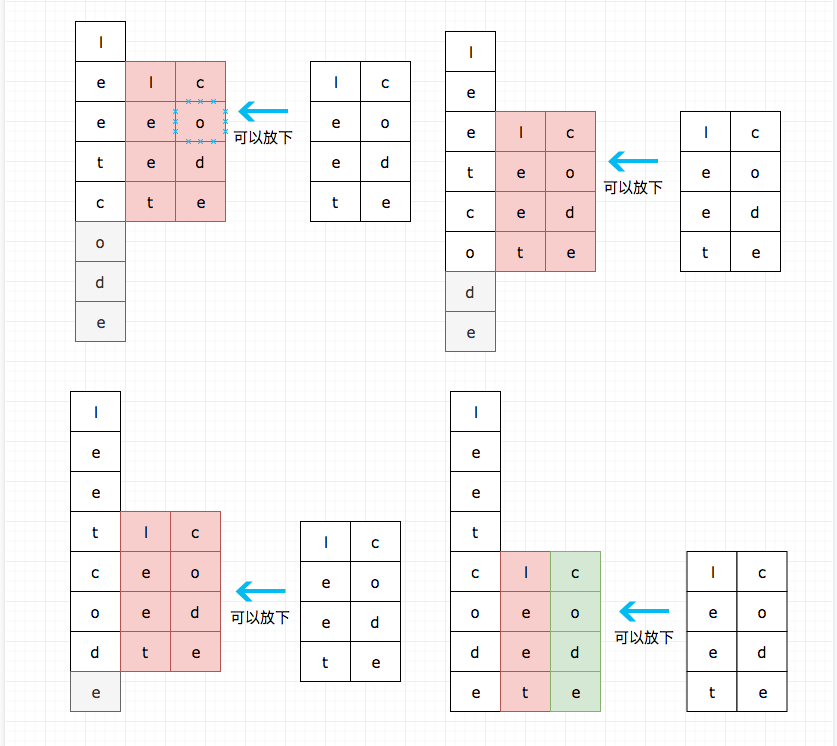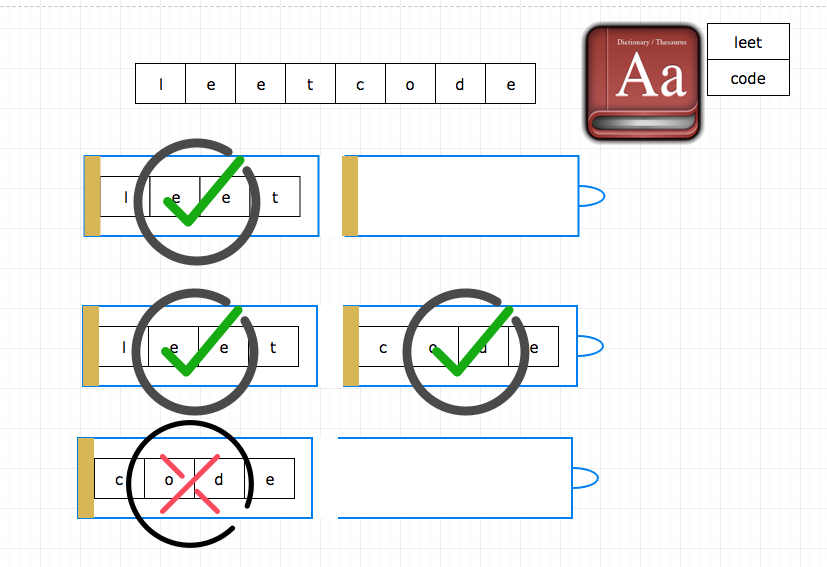4.0 KiB
4.0 KiB
题目地址
https://leetcode.com/problems/word-break/description/
题目描述
Given a non-empty string s and a dictionary wordDict containing a list of non-empty words, determine if s can be segmented into a space-separated sequence of one or more dictionary words.
Note:
The same word in the dictionary may be reused multiple times in the segmentation.
You may assume the dictionary does not contain duplicate words.
Example 1:
Input: s = "leetcode", wordDict = ["leet", "code"]
Output: true
Explanation: Return true because "leetcode" can be segmented as "leet code".
Example 2:
Input: s = "applepenapple", wordDict = ["apple", "pen"]
Output: true
Explanation: Return true because "applepenapple" can be segmented as "apple pen apple".
Note that you are allowed to reuse a dictionary word.
Example 3:
Input: s = "catsandog", wordDict = ["cats", "dog", "sand", "and", "cat"]
Output: false
思路
这道题是给定一个字典和一个句子,判断该句子是否可以由字典里面的单词组出来,一个单词可以用多次。
暴力的方法是无解的,复杂度极其高。 我们考虑其是否可以拆分为小问题来解决。
对于问题(s, wordDict) 我们是否可以用(s', wordDict) 来解决。 其中s' 是s 的子序列,
当s'变成寻常(长度为0)的时候问题就解决了。 我们状态转移方程变成了这道题的难点。
我们可以建立一个数组dp, dp[i]代表 字符串 s.substring(0, i) 能否由字典里面的单词组成, 值得注意的是,这里我们无法建立dp[i] 和 dp[i - 1] 的关系, 我们可以建立的是dp[i - word.length] 和 dp[i] 的关系。
我们用图来感受一下:
没有明白也没有关系,我们分步骤解读一下:
(以下的图左边都代表s,右边都是dict,灰色代表没有处理的字符,绿色代表匹配成功,红色代表匹配失败)
上面分步解释了算法的基本过程,下面我们感性认识下这道题,我把它比喻为
你正在往一个老式手电筒🔦中装电池
代码
/*
* @lc app=leetcode id=139 lang=javascript
*
* [139] Word Break
*
* https://leetcode.com/problems/word-break/description/
*
* algorithms
* Medium (34.45%)
* Total Accepted: 317.8K
* Total Submissions: 913.9K
* Testcase Example: '"leetcode"\n["leet","code"]'
*
* Given a non-empty string s and a dictionary wordDict containing a list of
* non-empty words, determine if s can be segmented into a space-separated
* sequence of one or more dictionary words.
*
* Note:
*
*
* The same word in the dictionary may be reused multiple times in the
* segmentation.
* You may assume the dictionary does not contain duplicate words.
*
*
* Example 1:
*
*
* Input: s = "leetcode", wordDict = ["leet", "code"]
* Output: true
* Explanation: Return true because "leetcode" can be segmented as "leet
* code".
*
*
* Example 2:
*
*
* Input: s = "applepenapple", wordDict = ["apple", "pen"]
* Output: true
* Explanation: Return true because "applepenapple" can be segmented as "apple
* pen apple".
* Note that you are allowed to reuse a dictionary word.
*
*
* Example 3:
*
*
* Input: s = "catsandog", wordDict = ["cats", "dog", "sand", "and", "cat"]
* Output: false
*
*
*/
/**
* @param {string} s
* @param {string[]} wordDict
* @return {boolean}
*/
var wordBreak = function(s, wordDict) {
const dp = Array(s.length + 1);
dp[0] = true;
for (let i = 0; i < s.length + 1; i++) {
for (let word of wordDict) {
if (dp[i - word.length] && word.length <= i) {
if (s.substring(i - word.length, i) === word) {
dp[i] = true;
}
}
}
}
return dp[s.length] || false;
};
